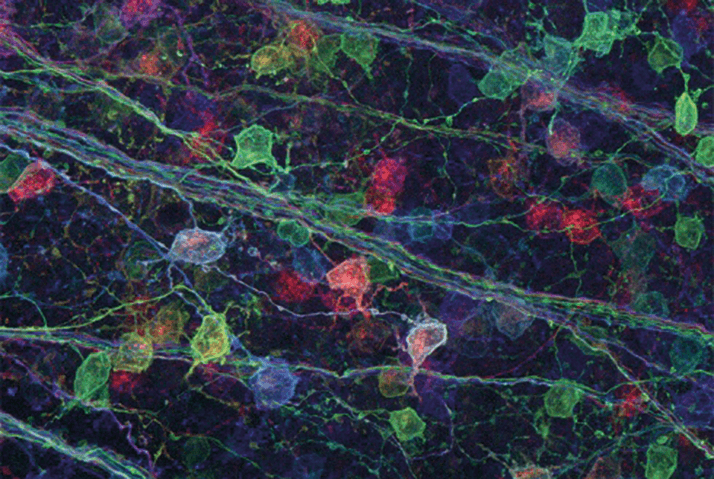
It’s well-known that the developing brain starts off with many more connections than it has in adult life, and that some of those connections are strengthened while others are eliminated in a processed called synaptic pruning. In terms of the brain’s visual function, this means that we start out with synaptic connections from many retinal ganglion cells (RGCs) converging on the cells of the lateral geniculate nucleus (LGN) in the thalamus (whereupon signals are relayed to the visual cortex). As we age, the number of connections decreases. Or so we thought.

Now, thanks to Michael Fox and his team at the Virginia Tech Carilion Research Institute, we know that retina-to-brain connections don’t work quite the way neuroscientists previously thought. The researchers used a technique called “brainbow” (Figure 1), in which each individual neuron is tagged with a different fluorescent color, to trace what they assumed would be a single RGC – the source of several axon terminals forming synaptic connections. But when Aboozar Monavarfeshani, the graduate student who did the tagging, looked at the samples, he saw a variety of colors indicating terminals from more than just one or two RGCs. “The samples showed a true ‘brainbow’ – I could see, right in front of me, something very different than the concept I learned from my textbooks.” The researchers verified their results by electron microscopy and reached the same conclusion: that the axon terminals from numerous RGCs, rather than the few previously thought, make synaptic connections to the LGN (1). What does this mean for vision research? “These results are not what we expected, and they will force us to reevaluate our understanding of the architecture and flow of visual information through neural pathways,” said Fox. With such new and unanticipated information, scientists who seek to understand how the brain contributes to sight may have to reconsider theories that might once have been taken as read. But though these experiments raise more questions than they answer, it’s simply a sign that we have a long way to go to fully understand the complex visual machinery of the brain.
References
- S Hammer, et al., “Multiple retinal axons converge onto relay cells in the adult mouse thalamus”, Cell Rep, 12, 1575–1583 (2015). PMID: 26321636.
